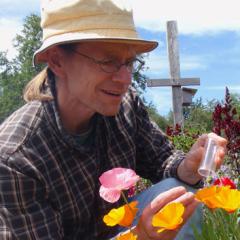Hanson's newest book Triumph of Seeds now out
From Kirkus Reviews:
“From tropical rain forests to alpine meadows and arctic tundra, seed plants dominate landscapes and define ecosystems.” In fact, they make up more than 90 percent of land flora.
Having caught our attention, conservation biologist Hanson (Feathers: The Evolution of a Natural Miracle, 2011) proceeds to tell how this happened. Traveling the world to interview experts without ignoring his own research, the author writes a delightful account of the origins, physiologies and human uses of a vast variety of objects that plants employ to make more plants. Long ago, ferns and mosses covered the Earth and reproduced by releasing clouds of tiny spores. These days, we encounter them as coal plus a scattering of survivors. Far more robust than spores, seeds are a dazzling evolutionary triumph with, Hanson stresses, five distinct qualities. They nourish a plant’s early life with either starch (grasses, grains) or fat and protein (nuts, legumes, beans). Humans have co-opted these nutrients as the foundation of our diet; modern civilization requires them. They unite. Seeds are the product of sexual reproduction, an enormous, creative evolutionary advance. They endure from months to decades, waiting for the right combination of elements to trigger germination. Centuries ago, human manipulation of dormant seeds made agriculture possible. They defend the embryonic plant with shells, husks, rinds and chemicals. Humans convert these to pharmaceuticals, enjoy them in a variety of applications (caffeine, peppers, chocolate) and sometimes get sick from them (hemlock, strychnine). Finally, seeds travel. Whether by wind or water or the guts of animals that eat them, this allows plants and the humans that follow them to occupy every habitat on Earth. “[F]or all the fascinating tales of seeds in nature,” writes Hanson, “one of their hallmarks is that we don’t have to look far to find them.”
A fine addition to the single-issue science genre.
